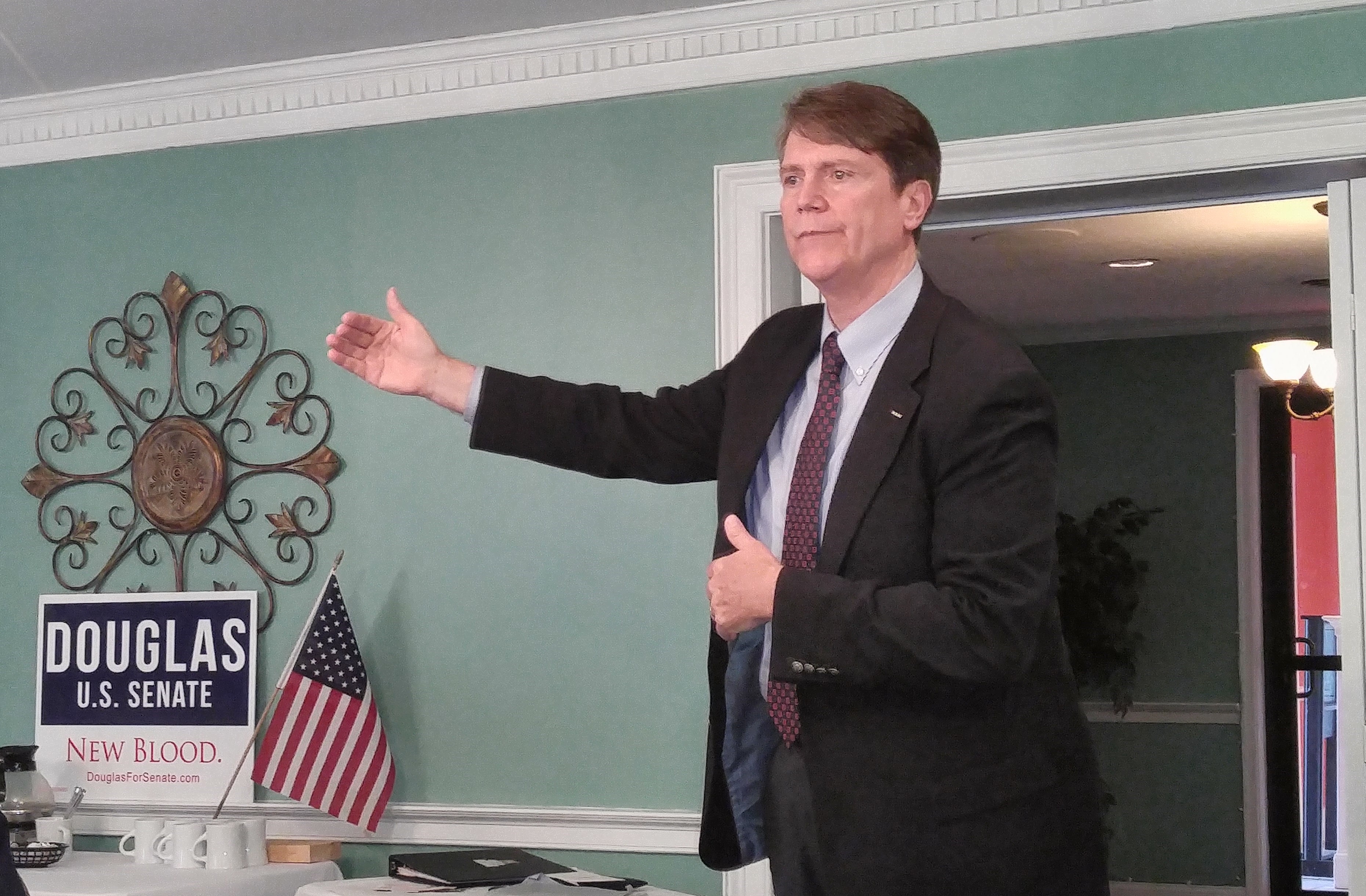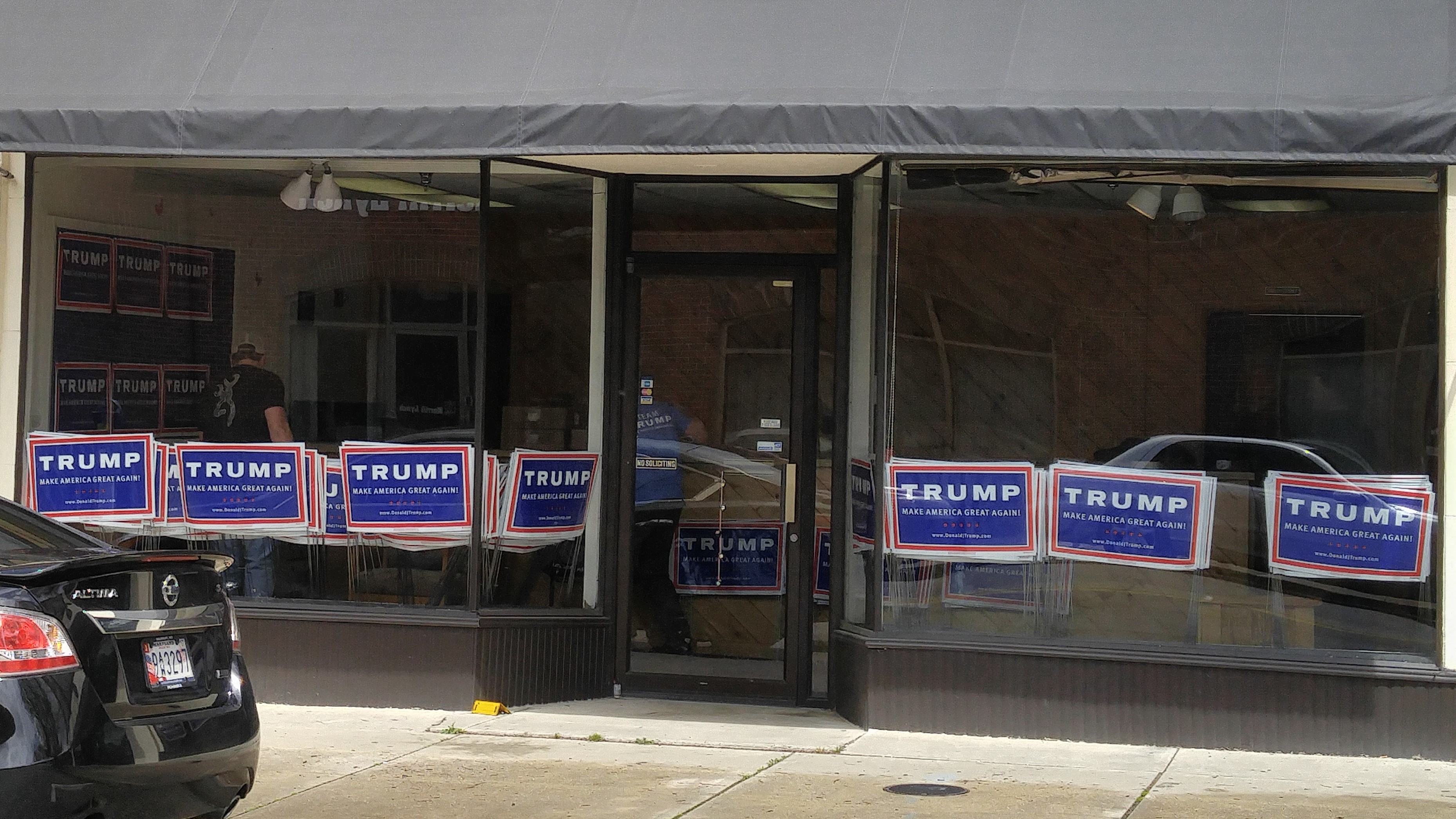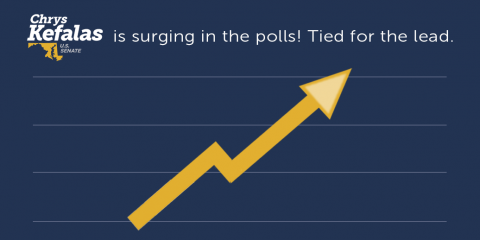Today I went Somerset County way to check out two events, one I had planned for awhile and one I had not until yesterday morning.
So at 9:00 this morning I found myself in a restaurant called Peaky’s eating breakfast with a man who wants to be Maryland’s next Senator.

Richard Douglas alerted me to his visit a couple days ago as we have kept in occasional touch since his last run in 2012; a primary that he lost to Dan Bongino. (Douglas still believes Bongino “ran a terrific race,” but Douglas won eleven counties as well.)
In fact, in his remarks Douglas revealed that his second try for the Senate came out of “watching this Iran trainwreck,” an agreement he called “on par with the Munich Agreement” between Hitler and Neville Chamberlain in 1938. Douglas remarked that Iran wasn’t the Westernized nation they try to portray but instead their people “want to kill Americans and British.” A Senate that approves an agreement with such a nation will tolerate anything, Richard added, noting the Senate is “such (that) it will not heal itself.”
With a significant part of his career being spent in the Senate, Douglas had knowledge of how the game worked, often picking up the volume which contains the Senate rules to make a point. He categorized his era in the Senate as being one with Republicans who had more backbone, such as his old boss Senator Jesse Helms. Regarding his time there, Douglas termed that the one of the “best moments” in the Senate was the Authorization for Use of Military Force passed in 2002. Passed as a bipartisan measure, Douglas wistfully noted that the Democrats were “back on the attack” a year later. Douglas also played up his experience with the Justice Department under President Bush as well as his service in the Navy during the Cold War.
Another of Richard’s passionate subjects is Cuba, as he predicted the island nation will open up – just not under the Castro regime. He also predicted that Barack Obama would make some lame duck pardons of several American criminals seeking refuge in Cuba, particularly cop-killer Joanne Chesimard. But opening up Cuba now in the way Obama has is already costing Americans their jobs, as Douglas cited an Alabama company which will move some operations there. “The Senate let it happen,” said Douglas.
In Richard’s opinion, a good Senator needed three things: discernment, a knowledge of procedure, and backbone. “If you’re missing backbone, the other two don’t matter,” said Richard. He continued the point by saying he was willing to deny unanimous consent if he judged a bill or amendment would be bad for Maryland or for the nation at large. “Alarm bells go off” when that happens, said Douglas, and leadership doesn’t like it. Senators “hate to vote,” said Douglas, because they’re put on the record.
Unfortunately, the Senate he’s trying to enter is one that enacted the Obama agenda instead of stopping it as promised. “They’re afraid of looking obstructionist,” said Douglas, “Instead, they look weak.” He would “take issues hostage” because it only takes one Senator to stop the train and start the bargaining.
Most of what Douglas said in his remarks dealt with procedure and foreign policy, but he made sure to mention that there are thousands of voters who don’t care about that because they are struggling economically. It’s “a problem on par with national security,” said Richard, and he stressed that he wanted to work with Governor Hogan to create an economic environment more like that of South Carolina, Georgia, or Texas. In visiting minority neighborhoods, Douglas revealed that “lots of African-American voters” were ready to vote Republican, in part due to Donald Trump. But Douglas called both Chris Van Hollen and Donna Edwards “eminently beatable.”
There were a number of questions laid out for Douglas, with one being just how far he would take the withholding of unanimous consent when it could cost the state on another bill. That aspect was “part of the calculus,” said Richard, but he vowed to “help when I can and resist when I must.”
Regarding illegal immigration, Douglas said the current laws were fine, just not being enforced. One area of concern for Richard was work permits, and he vowed to “put American workers first again,” trying to tilt the playing field back in our favor. Related to that was the refugee issue, on which Douglas pointed out America was once the “loudest voice” for refugees until Obama destroyed our credibility.
One thing that Douglas noted with regard to the Second Amendment was that Maryland has a “gap” in their state constitution. (He was referring to Article 28: “That a well regulated Militia is the proper and natural defence of a free Government.” It does not give Marylanders the right to bear arms.) But he thought firearms should be in the hands of law-abiding citizens and they shouldn’t face hurdles such as the fee prescribed by the state to secure a handgun permit.
To sum up, while Douglas believes “a weak Senate is bad for America” and has insider knowledge, he does not consider himself an insider. His insider knowledge would be used “for the good of the state.”
I should also note that the Somerset County Republicans have a monthly straw poll and this month Ted Cruz emerged the big winner with 14 votes of 22 cast. John Kasich received 6 and Donald Trump just 2. (More on him in a few paragraphs.) If I read their chart correctly, Cruz and Trump were tied last month but now fortunes have shifted dramatically. (As a caveat, the sample fluctuates each month, I’m sure. For example, they had me as an “extra” Cruz vote this month.)
As a housekeeping note and favor to those who may wish to enjoy breakfast with the Somerset County club (it was quite good), they voted to not have their meeting May 14 because it conflicts with the state GOP convention and several Central Committee members would be absent.
Those absent people must have also planned to show up at the event I was set on attending in the first place. Not a single Somerset County voter came out to Congressional challenger Michael Smigiel’s townhall meeting held at the library in Princess Anne. As a concerned voter who honestly hasn’t made up my mind in the race, it was great to have a 40-minute or so conversation with Mike, but as a blogger it was not very good because carrying on a conversation keeps you from taking notes and I didn’t bring a recorder. So I won’t be chock full of quotes here, and you can take the lack of attendance as you will – of all the counties in the First District, Somerset has the second-smallest number of Republicans. (Kent County, the second leg of Smigiel’s town hall tour today and the last of Smigiel’s planned twelve county stops overall, is the smallest by about 300 voters – both are shy of 5,000. But Smigiel comes from neighboring Cecil County.)
I was given two new pieces of literature today. While both make their good points about Smigiel, the message on the palm card is that “Harris Sold Us Out,” with the flyer adding “Harris Promised All The Right Things And Did All The Wrong Things.” Obviously those with long memories may recall that Harris ran a similar campaign against Wayne Gilchrest to secure the GOP Congressional nomination in 2008, and Smigiel uses some of that literature on his flyer. When I asked him whether he was basing his campaign on one vote Harris took (the CRomnibus bill of 2014) he replied it was more like eight.
A couple other contentions I made regarded Harris’s role in building the party as well as his seniority in Congress. It’s no secret that several local candidates were recipients of Harris money – you can call it buying support, but I would argue that the Congressman was out to build a conservative farm team in this part of the state. Smigiel countered that Harris was also the recipient of money from Exelon, which led to a Harris vote allowing the federal government the authority to override Maryland’s demand for a water quality permit for the Conowingo Dam. Mike also intoned that Somerset residents were unhappy with Harris for a vote against Hurricane Sandy cleanup funds, which is the linchpin for Jim Ireton’s Democratic campaign.
And I didn’t even bring up the Harris votes for Speaker with the former Delegate.
Overall, I felt bad for Mike that no one else showed up. Compare this with his stop in Salisbury that Cathy Keim covered for me while I was away, which had a fair number of people.
The question for all of us regarding this race is simple: Andy Harris is not a perfect Congressman, but then it’s possible no one would be. Is Mike Smigiel running a campaign to convince voters he would be a better alternative? I really didn’t get an answer to that question within our conversation, but it will come as a judgment call for me based on something Richard Douglas said: who has the better backbone to stand up for the people and do what’s right, not just for the First District, but America as a whole?
Someone who’s not convinced me he will do what’s right for America has nevertheless secured a headquarters here.

Yes, the Trump headquarters is at 229 East Main Street here in Salisbury, the former location of a print shop. They’ll be here for less than a month, as I’m told they have the space for a 30-day period. So the question is just what they will be doing in the building and how many people will stop by (it’s not on the beaten path and downtown parking can be a challenge during the day, when you have to feed a meter.) I suspect there may be some volunteers making phone calls from there and perhaps staging a later appearance from The Donald himself locally. That would be a hoot.
But I’ll stick with the choice of the Somerset County Republicans – #TrusTED Cruz.




